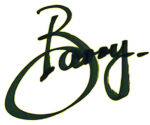Digital Darkroom: The Basics
There are hundreds, if not thousands, of web sites across the Internet that tell people how to prepare their digital photographs for printing or for publishing on the web. I find most of these go into way too much detail for what the ‘average’ basic digital picture snapper needs to worry about.
Because of this I plan to do four posts, not including this one, on the really basic things that you could think about doing to smarten up your digital pictures before you either print them or publish them on the web. It really is necessary to distinguish between printing and posting on the web because the decisions you make during the post-processing of a picture are dependant on which of these two purposes you have in mind.
The four posts will be:
1. Saving.
2. Cropping.
3. Setting the Levels.
4. Resizing and Sharpening for Web or Print.
Very briefly, to provide you with some idea of what I will be talking about, the following table gives you an insight into what each of these posts will cover.
|
Post Topic |
What it is about |
|
1. Saving |
This first posting just talks about two things: saving your edited files and why you need to be very careful never to accidentally save over your original picture files; and naming files as you save them. It also briefly talks about digital negatives or RAW files and why you should consider using a digital negative file format if your camera supports it—depending on the importance of the pictures you are taking. |
|
2. Cropping |
Back when I was just getting into digital photography I read in Amateur Photographer (a UK magazine, and I am not even sure it is still published any more) that almost every picture can be improved with cropping and how cropping can sometimes turn one picture into two or three other pictures. At the time I was not totally convinced, but now, after taking tens of thousands of digital photographs, I can say that I totally agree with this: Practically every photograph can be improved with cropping. While cropping is a huge subject area my post on this topic will simply show improvements from cropping and cover how to do it; which is really easy. Cropping is just about the easiest thing you could possible do really, although there are entire chapters in digital photography books on cropping and cropping “rules”. However I will not be boring you with these. My post will be very basic. |
|
3. Setting the Levels |
From my experience it is my view that about half of all photographs can be significantly improved if the “levels” are set. Some people call this “setting the black and whites” or “balancing the histogram”. But it all means the same thing. As for cropping, I will be keeping my post on setting the levels as simple and basic as possible. I will just be showing you how to do it and will not be going on for pages about the reasons for it. |
|
4. Resizing and Sharpening for Web or Print |
Doing this is so important if you are after the best presentation of your photograph on the Web or in print. While this might sound like it should be counted as two topics and therefore maybe two posts, resizing and sharpening are tied together so they need to be covered together. If you are going to use a photograph on the Web and also print it then, again, for the best results, you will need to resize and sharpen (and save) it once for the Web and again for printing. Printing a picture prepared for use on the Web will result in a very sub-standard picture being printed (unless you print it very small). And posting a picture to the Web that was prepared for printing is a bad idea for a number of reasons. |
These days there are hundreds of easy-to-use competent raster image editors available for doing the above work. Most of these are client programs that you need to install on a computer, but there are some that are Web-based. I find the Web-based image editors clumsy to use, slow, and non-responsive; but they will do the job. I don’t plan to cover any of the Web-based editors in my posts.
Examples of image editors are: Adobe PhotoShop CS, Adobe PhotoShop Elements; Corel Paint, ACDSee, PaintShop Pro (now a Corel product), GIMP, and Google Picasa (which is free). I will be using PhotoShop Elements, Corel Paint, and Google Picasa (which is free).
So, watch out now for my first post on saving images and image formats which will be called “Digital Darkroom: Saving Images 101”.

